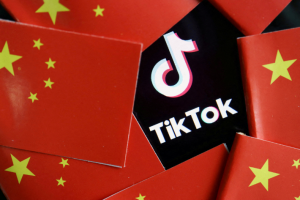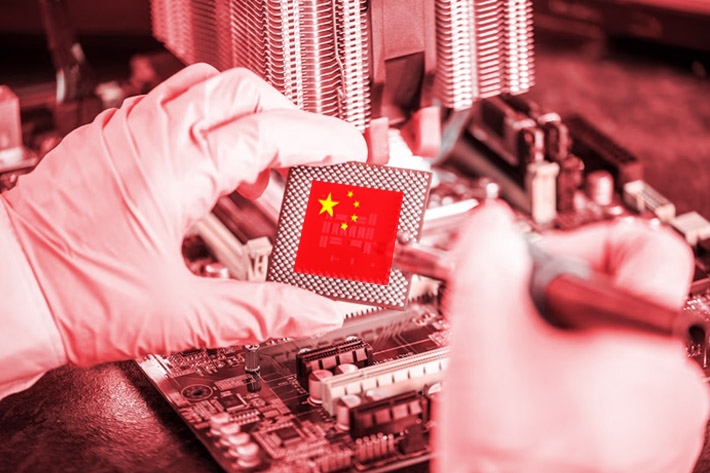Innovation experts who assessed the impact of export controls imposed by the US on computer chips sold to China say that while the restrictions have delivered a significant blow to the Asian giant’s semiconductor sector, the outcome so far is a “mixed picture in a complex and rapidly evolving industry”.
China has responded to the Biden Administration’s moves by intensifying its chip investments and cutting US firms’ market share – a response that has the potential to undermine the competitiveness of US companies because it reduces earnings that firms would be able to spend on next-generation technology, they said.
But a key conclusion from the report – by Sujai Shivakumar, Charles Wessner and and Thomas Howell, published by the Center for Strategic and International Studies – is that there is “no way back” to the global semiconductor ecosystem that existed before the Covid-19 pandemic.
ALSO SEE: Bank of Japan Ends Negative Rates, as Ueda Normalises Policy
While the US had a significant lead in semiconductor design and some equipment, the most advanced chips were no longer being made by US firms, and vulnerabilities from a supply chain anchored in China were “too alarming” for the US, they said, plus China’s perception of the US as a reliable supplier had changed.
“It is unlikely either side will be willing, or allowed, to return fully to the previous supply chain,” they said.
Large chip fabs set up in China by Korean tech giants such as Samsung – at huge expense – had been affected and were now “hostage to the vagaries of the US-China chip rivalry.”
The great dilemma, they said, was that US and allied chipmakers were now competing with their biggest customer.
‘Gaps in compliance’
Initial export curbs imposed by the US in October 2022 were limited by changes within the sector, plus “gaps in compliance between US companies and those of allies”. But the restrictions were greatly tightened late last year and have had far-reaching impacts.
President Biden also signed an executive order blocking investment in the chip, quantum and AI sectors in “countries of concern” and Treasury officials are is preparing restrictions on US investment in AI sectors in China used for surveillance, intelligence or by the military.
That’s because China is seen by some as a ‘near peer’ power bent on surpassing the US by whatever means possible.
The problem for Washington is that while important export curbs have also been implemented by Dutch and Japanese firms selling advanced lithography machines to China, the allied response to date has been described as “piecemeal” (by The Economist), and left big holes in the net the US has tried to create.
The Dutch lithography giant ASML produces the most important chip production equipment, yet their curbs are limited to a small number of products.
China’s multi-pronged response
Some Chinese chipmakers, such as Yangtze Memory Technologies Co, had been hit hard and were forced to lay off staff, but Beijing had responded by pouring money into chip R&D and backing a focus on higher-node chips with multiple economic uses.
Billions were being invested by entities like the National Integrated Circuit Industry Investment Fund Company (known as the “Big Fund”), and Chinese companies had been “extraordinarily adept” at getting round the West’s export controls via third parties, groups offshore or shell companies, which can be hard to track because they often change their names.
Chinese chipmakers had bought a swag of Dutch and Japanese semiconductor manufacturing equipment before export controls were fully imposted, plus US exemptions from the controls were another loophole.
They were also expanding their technological infrastructure. China’s Tsinghua University, for example, is looking to build a giant particle accelerator with a circumference of 100–150 metres with an electron beam for on-site chipmaking.
It wants to build a ‘huge factory’ with multiple lithography machines set up around the particle accelerator, with the goal of enabling China to make 2-nanometre chips in high volume, according to a report by the South China Morning Post.
And with multiple entities involved, China has been making progress despite US sanctions. Perhaps the best example of this is the Mate 60 Pro smartphone developed by Huawei, which was very popular and outsold Apple after it was launched last September.
The 7nm chip used in the Huawei phone was partly achieved by exploiting multiple gaps in the Western export control regime, they said.
China had “quietly revived the Thousand Talents Plan” to attract foreign and overseas Chinese technology experts, with generous salaries and bonuses, although it now operates under the name Qiming.
It has also been taking a range of measures to the US chip industry.
So, while China had been unable to develop significant microelectronic innovations, it has been able to partly bridge the tech gap via “leaky [export] controls and systemic theft.”
The big concern, as others have already suggested, is the controls imposed by the US and its allies will spur indigenous innovation that leads to breakthroughs that transform the chip industry.
The US, they said, will need an advisory body that closely consults with industry to ensure they achieve their national security needs. The complexity and opacity of the chip supply chain – a lot of which is in East Asia – means it is hard to isolate actors within the system without harming your own interests.
Coordination with partners will be crucial, they said.
- Jim Pollard
ALSO SEE:
BYD to Use Nvidia’s Next-Gen Chips to Elevate Self-Driving Tech
Japan ‘Not Planning’ to Widen China Chip Curbs Despite US Push
In Manila, Raimondo Promises Chip Fabs and More Curbs on China
Intel Can Keep Selling Chips to Huawei Despite AMD Protests
Updated US Rules May Ban Sale of ‘Fast’ AI Chips to China
China Offering Millions to Foreign-Trained Chip, Tech Talents
Chinese Envoy Warns US: More Chip Bans and We’ll Hit Back
























